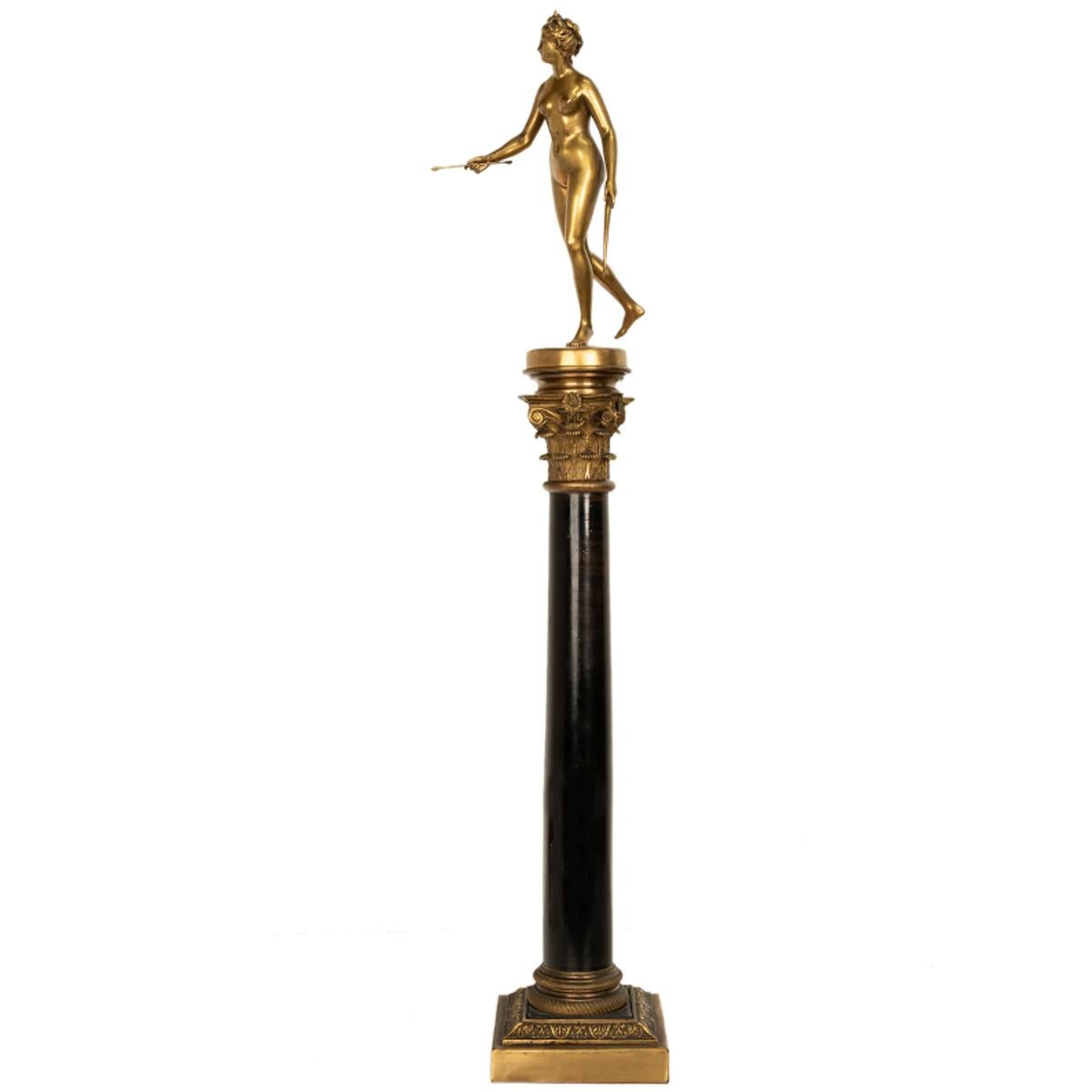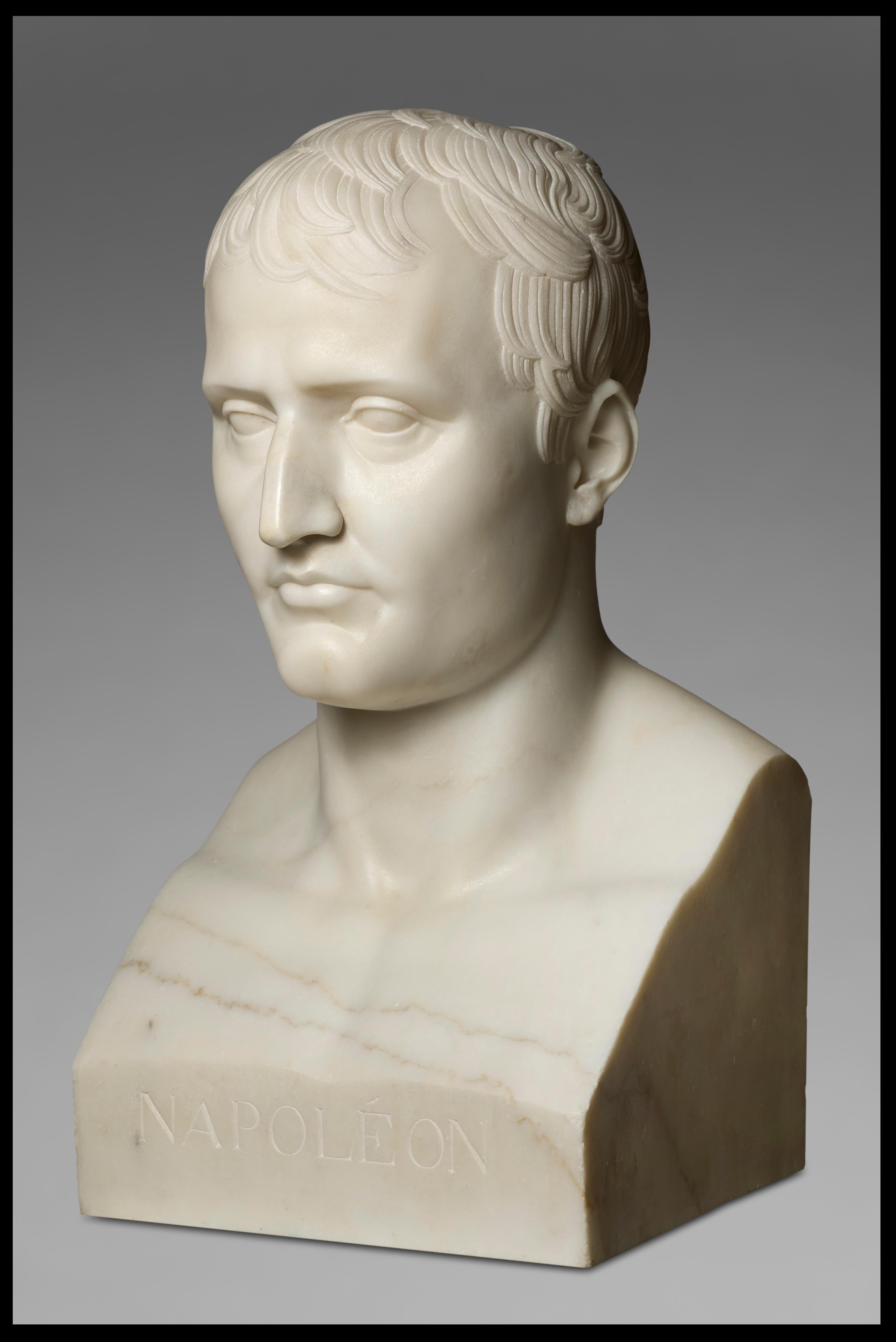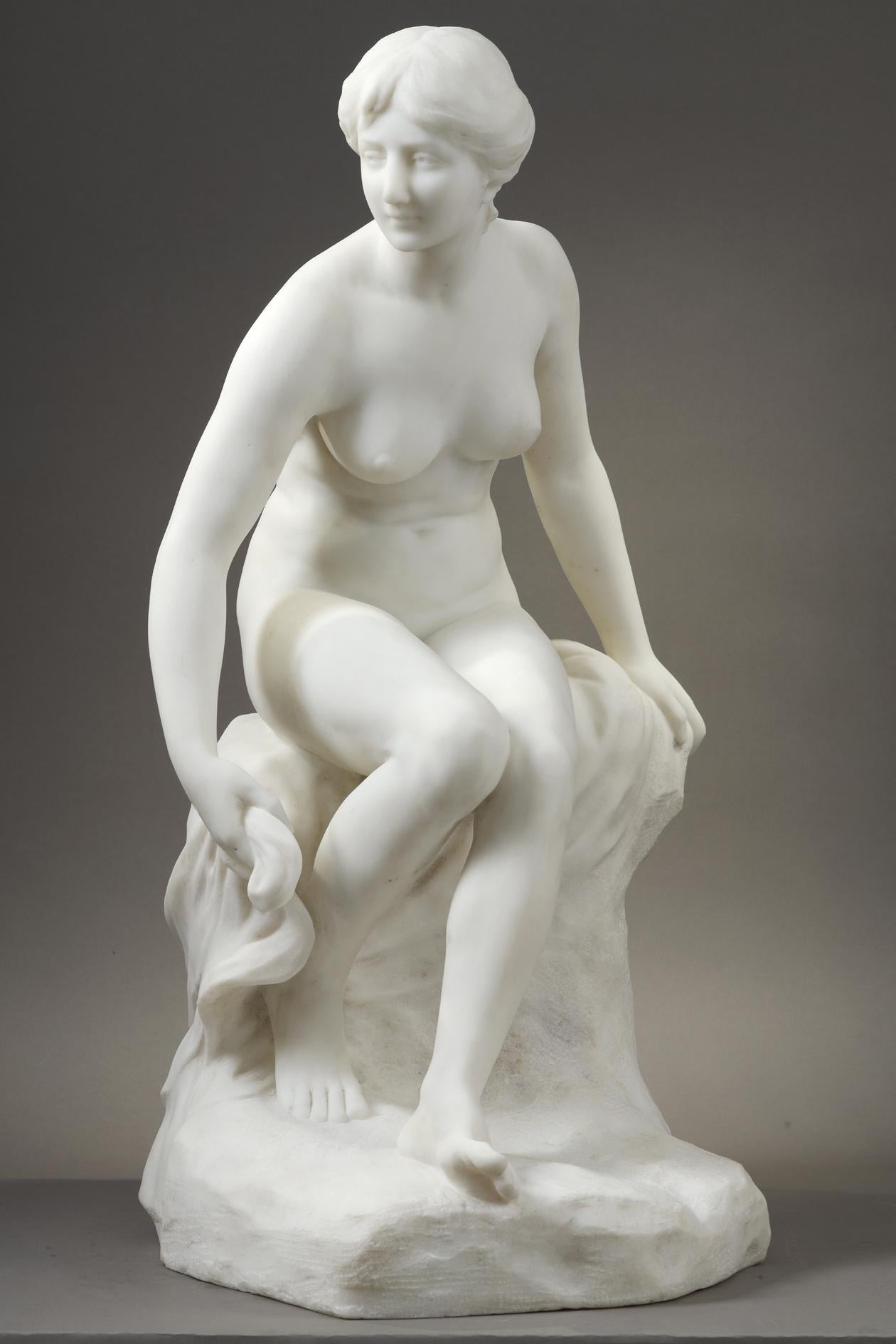Items Similar to Oak and Marble 18th Century French Commode
Want more images or videos?
Request additional images or videos from the seller
1 of 2
Jean Pierre LatzOak and Marble 18th Century French Commode
About the Item
Oak with marble top
Height: 55 inches (86.25 cm)
Width: 55 inches (140 cm)
Provenance
Château de Mareil Le Guyon
This commode is available to view at our gallery on Cecil Court.
Jean-Pierre Latz
Jean-Pierre Latz was one of the handful of truly outstanding cabinetmakers working in Paris in the mid 18th-century. Like several of his peers in the French capital, he was of German origin. His furniture is in a fully developed rococo style, employing boldly sculptural gilt-bronze mounts complementing marquetry motifs of flowers and leafy sprays, in figured tropical veneers like tulipwood, amarante, purpleheart and rosewood, often featuring the distinctive end-grain cuts. He also produced lacquered pieces, most famously the slant-front desk in the collection of Stavros Niarchos, Paris.
The son of a certain Walter Latz, Jean-Pierre was born near Cologne, where he must have received his training, for when he settled in Paris in 1719, where he was received into the cabinetmakers' guild, he was aged twenty-six. He always retained a certain German weightiness to his designs. When the practice of stamping the carcasses of furniture was introduced in Paris, Latz was already in full career. Nevertheless, his style is individual enough that a range of unstamped case furniture, writing tables and especially clock cases, his specialty, with close stylistic connections to stamped pieces, can be attributed to his workshop.
- Creator:Jean Pierre Latz (1691 - 1754, French)
- Dimensions:Height: 55 in (139.7 cm)Width: 34 in (86.36 cm)
- Medium:
- Movement & Style:
- Period:
- Condition:
- Gallery Location:London, GB
- Reference Number:1stDibs: LU52414175582
About the Seller
5.0
Vetted Seller
These experienced sellers undergo a comprehensive evaluation by our team of in-house experts.
Established in 2007
1stDibs seller since 2014
64 sales on 1stDibs
Typical response time: 4 hours
- ShippingRetrieving quote...Ships From: London, United Kingdom
- Return PolicyA return for this item may be initiated within 14 days of delivery.
More From This SellerView All
- St Mark's Square, Venice, 19th Century French Watercolour, Signed, '1868'Located in London, GBWatercolour on paper, signed and dated '1868' lower right Image size: 16 x 11 1/2 inches (40.5 x 29.25 cm) Mounted The scene represents the edge of the piazza at St Mark's Square i...Category
1860s French School Landscape Drawings and Watercolors
MaterialsPaper, Watercolor
- The School of Arms, Pen and Ink Fencing Drawings, c.1920s FrenchLocated in London, GBPen and Ink, titled lower centre Image size: 11 x 18 inches (28 x 46cm). Priced as Individuals Please note that each image size varies slightly These pen and ink studies show two g...Category
1920s French School Figurative Drawings and Watercolors
MaterialsPaper, Ink, Pen
- The Death of Attis, 18th Century French Red Chalk Drawing, Greek MythologyLocated in London, GBRed chalk on paper Image size: 9 x 7 inches (23 x 17.75 cm) Acid free mount The Greek god Attis was the spouse of Cybele, the fertility goddess. He was from Phrygia, a kingdom in c...Category
18th Century French School Figurative Drawings and Watercolors
MaterialsChalk
- Portrait of a Lady with her Hair Adorned with Flowers, 18th Century FrenchLocated in London, GBOil on canvas Image size: 21 1/2 x 17 3/4 inches (55 x 45 cm) Original gilt frame In this portrait this young woman is depicted facing forward with her head slightly raised and turned left towards the viewer. She is dressed in a blue satin dress. The low-cut drapery, exposing her décolletage, was not unusual for the time as 18th century women would often wear their dresses off-the-shoulder or fitted with a very open neckline. Her perfectly oval face is enlivened by wide brown eyes, full cheeks and a mouth that sketches a half smile. Her cheeks rose with blush, which was a popular cosmetic style during the Rococo period and contrasts with her ivory skin and powdered hair. Her tied hair is studded with many flowers and the ribbon around the woman's throat accentuates her bare neck. Alexander Roslin Alexander Roslin was one of the most important portrait painters of Europe in the 18th century. He was born in Malmö in Sweden but soon moved into Europe to paint at various royal courts. From 1750 on he worked mainly in Paris. Here he was destined to achieve great success. He had collected letters of recommendation on his journey through Europe, including that of the Duchess of Parma, the sister-in-law of Louis XV. Soon he was admitted to the court and the Royal Academy in Paris and when he married in 1759 he was the most wanted artist in Paris for portraits. He was married to the miniature painter Marie Suzanne Giroust. Although he painted mainly French nobility...Category
18th Century French School Portrait Paintings
MaterialsCanvas, Oil
- Summer Morning, 19th Century French School, Impressionistic LandscapeLocated in London, GBOil on canvas Image size: 8 x 10½ inches (20 x 27 cm) Contemporary frame This charming portrayal of a rustic house in the early hours of the morning is an excellent example of the e...Category
19th Century French School Landscape Paintings
MaterialsCanvas, Oil
- Study of a Woman Sitting, Graphite Drawing, 19th Century French SchoolLocated in London, GBGraphite on paper Image size: 13 x 10 1/2 inches (33 x 27 cm) Mounted This is a delicate 19th century academic graphite drawing of a seated female nude in the neoclassical style. A...Category
19th Century French School Nude Drawings and Watercolors
MaterialsPaper, Graphite
You May Also Like
- Antique French Grand Tour Gilt Bronze Statue on Column Diana the Huntress 1838By Ferdinand BarbedienneLocated in Portland, ORA fine & large (34" tall) antique French gilt-bronze on marble column of Diana, cast by Ferdinand Barbedienne (1810-1892) after a statue by Jean Antoine Houdon (1741-1828), the bronz...Category
1830s French School Figurative Sculptures
MaterialsMarble, Bronze
- The SpringBy Albert-Ernest Carrier-BelleuseLocated in PARIS, FRThe Spring by Albert-Ernest CARRIER-BELLEUSE (1824-1887) Sculpture made in white Carrara marble signed on the base "A. Carrier-Belleuse" France circa 1870 height 76,5 cm width 30 cm depth 24 cm Biography : Albert-Ernest Carrier de Belleuse known as Carrier-Belleuse (1824-1887) was one of the most prolific artists of the century and had the greatest successes under the Second Empire, enjoying the personal support of Napoleon III. His work was greatly influenced by the style of the Italian Renaissance and that of the 18th century, which he helped to bring up to date. In 1837, the young Carrier-Belleuse apprenticed in the workshop of the engraver Bauchery. He was admitted soon after to the goldsmith Jacques Henri Fauconnier. Through François Arago, he met the sculptor David d'Angers who facilitated his admission to the School of Fine Arts. Carrier-Belleuse entered it in 1840. Noted for his skill by the great bronze companies in Paris such as Barbedienne and Denière, he soon received numerous orders for models for candelabras, pendulums, fittings for fireplaces, etc. In 1848, probably at the initiative of François Arago, who became head of state, he received his first public order for a small statue of "Mademoiselle Rachel singing La Marseillaise". In 1851, he appeared for the first time at the Salon of French Artists, where he presented two bronze medallions. From 1851 to 1855, Carrier-Belleuse stayed in England, in Stoke-on-Trent where he served as director of the modeling and drawing school of the Minton house, a large porcelain manufacturer. Back in France, Carrier-Belleuse moved to Paris in a large workshop located 15 rue de la Tour d´Auvergne. From 1857, he made regular sendings to the Salon and became famous thanks to the success of large marbles, such as the "Bacchante" exhibited at the Salon in 1863, and acquired by Napoleon III, "Angelica" (1866) or even "Hebe asleep" (1869). At the Salon of 1867, his group entitled "Messiah" earned him the medal of honor of sculpture. It was acquired by the State to adorn the Chapel of the Virgin in the Saint-Vincent-de-Paul church. Carrier-Belleuse acquired a great reputation in parallel for his terracotta busts which, in many respects, recall those of 18th century artists. He made portraits of a large number of celebrities of his time. He produced, among others, the busts of Napoleon III, Renan, Thiers, Grévy, Arago, Marguerite Bellanger, Théophile Gautier, Honoré Daumier, Delacroix, Hortense Schneider, Réjane… He also modelled numerous busts of mythological inspiration and historical and artistic portraits like Marie Stuart, Shakespeare or even Mozart. Carrier-Belleuse used and trained in his workshop in the rue de la Tour d´Auvergne many young talented artists such as Alexandre Falguière, Jules Desbois, Eugène Delaplanche, Jules Dalou or Joseph Chéret; but he was best known for having been the master of Auguste Rodin who entered his studio as a practitioner in 1864. Carrier-Belleuse devoted himself a lot to decorative sculpture. He contributed to the decorations of many important buildings. We owe him in particular the caryatids of the Renaissance theater in Paris, the pediment of the main entrance to the Banque de France, the stucco ceilings of the Lesdiguières and La Trémoïlle pavilions at the Louvre Palace, the frieze of the Palais de la Bourse in Brussels, or the decoration of the Hôtel de la Païva on the Champs-Elysées in Paris. He also received State commissions for monuments: that of Jean-Jacques Rousseau in Montmorency, of Alexandre Dumas, in Villers-Cotterêts, of Masséna in Nice. Abroad, he produced the equestrian statue of Michael the brave in Bucharest and the tomb of José de San Martín in Buenos Aires. In 1873, Carrier-Belleuse took part in the construction of the Paris Opera house, directed by his friend Charles Garnier. He created the two monumental torchieres...Category
1870s French School Figurative Sculptures
MaterialsMarble
- Napoleon IstLocated in Paris, FRAntoine-Denis CHAUDET (1763 - 1810) NAPOLEON Ist, circa 1808 Carrare Marble - First Empire Hermes Bust of Napoleon Ist, after Antoine-Denis CHAUDET Dimen...Category
Early 1800s French School Figurative Sculptures
MaterialsMarble
- BatherLocated in PARIS, FRBather by Etienne Hachenburger (19th-20th C.) Sculpture in white Carrara marble Signed on the side of the base "E. Hachenburger" A simiilar model was exhibited at the Paris Salon oh...Category
Early 1900s French School Nude Sculptures
MaterialsMarble
- DucksLocated in PARIS, FRDucks by Josette HEBERT-COEFFIN (1906-1973) Sculpture made in stone signed on the base "J. H. Coëffin" France circa 1930 height 10 cm width 16,5 cm depth 14,1 cm Biography : Jose...Category
1930s French School Figurative Sculptures
MaterialsLimestone
- Madonna and Child, carved and polychrome wood, Early 18th C, South of FranceLocated in brussel, BEAlthough the 18th century, the period of the Enlightenment in France, spawned thinkers who criticized the privileges of the clergy and the truthfulness of certain dogmas, the Roman Catholic faith was very much present in everyday life. Since king Louis XIV had issued the Edict of Fontainebleau in 1685, Protestantism was banned from the country. This Madonna with child illustrates the daily practice of faith. Like many 18th-century Madonna statues...Category
18th Century French School Figurative Sculptures
MaterialsWood
Recently Viewed
View AllMore Ways To Browse
Six More
18th Century French Art
French 18th Century Art
Antique French Commode
Antique French Commodes
Oak Gallery
Grain Cut
Marble Motif
Antique Marble Collection
Antique Oak Collection
French Rococo Art
Antique Oak Veneer
Antique Guild
French School 18th Century
Tropical Flowers Art
Antique German Marble
French Marquetry 18th
Mid Century Slant



